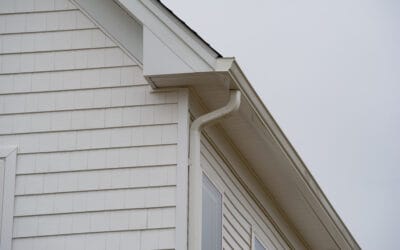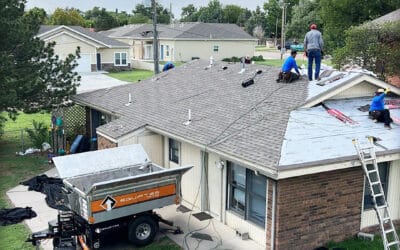Many construction and contracting companies offer some form of a workmanship warranty. What does this actually mean, what is usually included, and what is the spectrum or warranties commonly found?
A “workmanship warranty” is a form of guarantee or promise that covers the quality of work performed by the contractor, which is distinct from any material warranties or product guarantees.
As a customer, it’s important to understand what a “workmanship warranty,” both when evaluating a contractor for proposed work, or when determining recourse for issues that have arisen from a previous project. In many cases, projects done by licensed professionals are covered with both workmanship warranties and material/product warranties (provided by the manufacturer), so understanding the difference will help come to resolution.
What is Workmanship?
Workmanship is a term that describes the level of skill and quality of work performed by a contractor. In the construction industry, workmanship is a critical component of ensuring a project’s longevity and safety. Therefore, when a contractor offers a workmanship warranty, they are guaranteeing that their work meets a certain standard of quality and that they stand behind their work.
What Does a Workmanship Warranty Cover?
A workmanship warranty typically covers any defects in the quality of work performed by the contractor or any assignee (subcontractor) who is responsible for the work. This includes any issues that may arise from faulty installation, incorrect building techniques, or other workmanship-related issues.
There are two types of damages related to workmanship issues:
-
- Corrections (also called resolutions). Think of this as “fixing the problem.” If something was installed incorrectly, it needs to be reinstalled.
- Consequential damages. This describes the resulting damage caused by the error. Think of a leak – sealing/fixing the leak would be the correction, and fixing the damage caused by water intrusion would be addressing the consequential/resulting damage
As with anything, there is a spectrum of coverage between companies, so good questions to ask are about coverage in these two areas; are there caps to consequential damages? What does that process and approval look like?
How are Warranties Provided?
The warranty itself should be a written document provided by the contractor. Some include the language about warranty within their contract or signed scope of work, while other contractors will issue a signed letter to the customer after the work is completed, which includes warranty information and any provisions.
This is different from product or material warranties, which are issued with the product itself and backed by proof-of-purchase, usually a receipt or invoice. Most products – and certainly building/construction materials, have warranty information printed on the packaging if there are any material guarantees offered.
Note that in the case of a contractor pairing both a workmanship warranty (of their own work) with a product/material/manufacturing warranty (from their supplier), the material list section of a signed contract is most often what constitutes a proof of purchase for the customer. Even though the contractor is typically the one to actually purchase the materials for a job, the material warranty is extended to the customer that is the end-user of the installed product.
For detail on our own warranties provided by Rhoden Roofing for work we do in the greater Wichita area, see our Lifetime Warranty Information page
Is a Workmanship Warranty Transferable?
Many workmanship warranties are transferable, meaning that if the property changes ownership, the warranty can be transferred to the new owner. However, there may be a fee, timeline, or limitations associated with transferring the warranty, so it’s essential to check with the contractor beforehand. These details will be outlined in the
In general, the larger the project, the more likely there is to be provisions for transfer, and protection for the new property owner. However, in a similar fashion, the larger the dollar value of the project (and therefore liability to the company of making repairs), the more likely a contractor is to charge a transfer fee.
How Does a Workmanship Warranty Overlap with a Material Warranty?
A material warranty is different from a workmanship warranty. A material warranty covers any defects or issues that arise from the materials used in the construction project, while a workmanship warranty covers the quality of work performed by the contractor. These warranties may overlap in some cases, but they are distinct from each other.
See our main article on roofing material warranties, What Should I Know About My Shingle Warranty.
What Extra Steps Do Contractors Go Through to be Able to Offer a Workmanship Warranty?
Contractors that offer workmanship warranties typically undergo additional training and certification to ensure that their work meets a certain standard of quality. They may also use high-quality materials and follow best practices to ensure that their work is of the highest quality.
Additionally, thorough photo documentation is often done of the process to ensure both internally and to the customer that the work was performed properly. Photo documentation may be required for certain product/manufacturer’s warranties as well, or allow contractors who meet certain (documented) installation standards to offer increased/extended product warranties because the manufacturer can be confident that the materials will be performing in an optimal installation scenario.
What is the Process for Calling in a Workmanship Warranty?
If you have an issue covered by the workmanship warranty, the first step is to contact the contractor who performed the work. They will assess the situation and determine if the problem is covered by the warranty. If it is, they will then take the necessary steps to correct the issue.
What are the Signs of a Manufacturer’s Defect or Something that Would be Considered Under the Product Warranty?
Signs of a manufacturer’s defect may include issues with the materials used in the construction project, such as defective shingles or faulty flashing. These issues would be covered under the product warranty and would need to be addressed by the manufacturer. Specific to roofing, we have published a series specifically on identifying manufacturing defects on asphalt shingles.
What Areas of a Roof are Most Common Concerns for Warranty or Workmanship Claims?
Roofing is one area where a workmanship warranty is commonly offered. Some of the most common concerns for roofing warranty or workmanship claims include improper installation of shingles or flashing, leaks, and problems with ventilation.
What About Storm Damage?
Storm damage is typically covered by insurance, so it falls outside the purview of a workmanship warranty. However, a good contractor will have a claims team in place to help guide customers through the insurance process and ensure that any storm damage repairs are completed quickly and efficiently.
Takeaways
A workmanship warranty is a promise from a contractor that their work meets a certain standard of quality. It covers any defects in the quality of work performed and may include necessary repairs or corrections. Knowing about warranties can enable customers to make educated decisions about their home or property by evaluating the differences between different potential contractors. Workmanship warranties are usually a good sign that work will be performed well, because it is a legally-enforceable promise made by the company to guarantee their work for as long as the warranty term indicates.
If you are in the greater Wichita area and looking for quality roofing & gutter work backed by a lifetime workmanship warranty, Rhoden Roofing offers free inspections and estimates.



